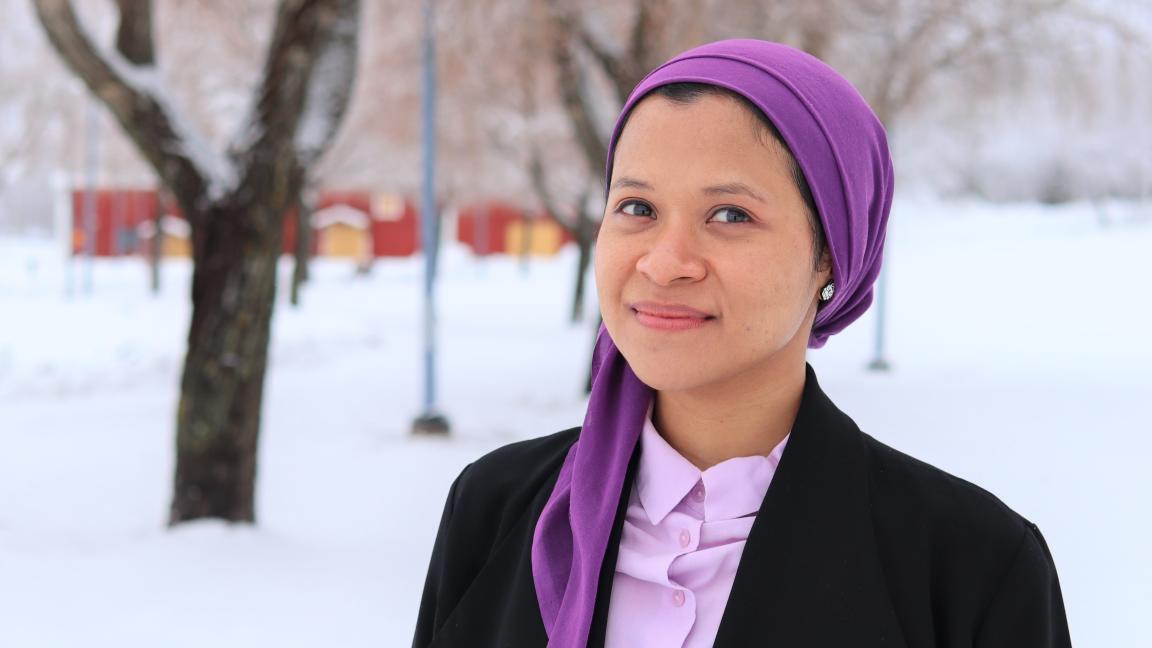– We often hear claims about some solutions being circular, sustainable, or green. Instead of blindly accepting those claims, we should ask justifications, ‘How so?’ says Mayanti, who will publicly defend her dissertation on Wednesday, 5 April.
Before deciding on circular economy solutions and building supply chains, it is worth doing a careful analysis. According to Mayanti, a life cycle assessment is a good method for this. It allows organisations to measure the environmental impact of their products and services over their entire life cycle, investigate environmental hotspots, compare different strategies and ensure that the decision benefits the environment.
In addition to the environmental impacts, it is also important to bear in mind that circular solutions have economic impacts. In her doctoral research, Mayanti has combined two different tools: life cycle assessment, which measures environmental impacts, with life cycle costing, which assesses the economic impact of a product or service over its life cycle. She has used this combined tool for the case studies in her dissertation.
Recycling agricultural plastic waste would benefit both the environment and finances
Finnish farms produce 12,000 tons of plastic waste annually, of which approximately half is bale wrap. Currently, the majority of this waste ends up in landfills. Mayanti conducted a case study on the recycling of agricultural plastic waste, involving 179 farms in southern Finland. In one scenario, bale wrap and other agricultural plastics were collected once a year, and in another scenario, twice a year.
Mayanti found that recycling agricultural plastic waste can reduce costs and carbon footprint compared to producing virgin material. The study showed that collecting agricultural plastic waste once a year was cheaper than collecting the waste twice a year. On the other hand, collecting waste twice a year provided higher environmental benefits, including improvement on the climate change impact.
– There is a trade-off between the economic and environmental aspects. Collecting the bale wrap plastic twice a year will inflate the collection cost while providing more environmental benefits since the plastic waste is less polluted and weathered. On the other hand, the yearly collection is cheaper, but plastic may be more worn-off, says Mayanti.
Separate collection of bio-waste can be environmentally and economically viable
In addition to agricultural plastic waste recycling, Mayanti studied a separate collection of biowaste, optimisation of waste-to-energy plants, and burden-sharing in waste management systems.
The recent Finnish legislation requires a minimum of five housings for separate biowaste collection to be arranged. Compared to ten housings in the old legislation, it creates a new cluster for source-separated biowaste collection.
A real case with over 2200 households in Kauhajoki municipality in Finland showed that the recent legislation led to overall higher economic benefits and lower environmental damage costs compared with the old legislation. Although collection costs increased, source-separated biowaste will be treated in a biogas plant which bears lower costs than an incinerator plant.
Mayanti's research also examined waste-to-energy incineration plants. By adjusting operational parameters such as temperature or pressure, it was possible to improve system efficiency and environmental and economic performance.
Even though the study showed the overall economic benefits, the financial burden among the stakeholders within waste management is imbalanced. In the case of agricultural plastic waste recycling and source separated biowaste, collection costs that can be expensive should be borne by the farmers and residents.
– In the case of agricultural plastic waste recycling, some form of subsidy may be needed. Alternatively, Finland can include agricultural plastic waste into an extended producer responsibility scheme and apply national collecting schemes, says Mayanti.
Doctoral dissertation
Mayanti, Bening (2023) Toward circularity: lifecycle-based approach in waste management. Acta Wasaensia 505. Doctoral dissertation. Vaasan yliopisto / University of Vaasa.
Public defence
The public examination of M.Sc. Bening Mayanti’s doctoral dissertation ”Toward circularity: life cycle-based approach in waste management” will be held on Wednesday 5.4.2023 at noon at the University of Vaasa, auditorium Wolff.
It is possible to participate in the defence also online (Zoom, password: 149961)
Professor Kim Tan (Nottingham University Business School) will act as the opponent and Professor Petri Helo as the custos
Further information
Bening Mayanti was born in 1987 in Bandung, Indonesia. She graduated from Institut Teknologi Bandung (Indonesia) in 2009 with a Bachelor's degree in Environmental Engineering and from Wageningen University (The Netherlands) in 2013 with a Master's degree specialising in Environmental Systems Analysis. She has previously worked as an environmental consultant in Indonesia and as a researcher in biological wastewater treatment in Singapore. Mayanti currently lives in Vaasa, Finland.

